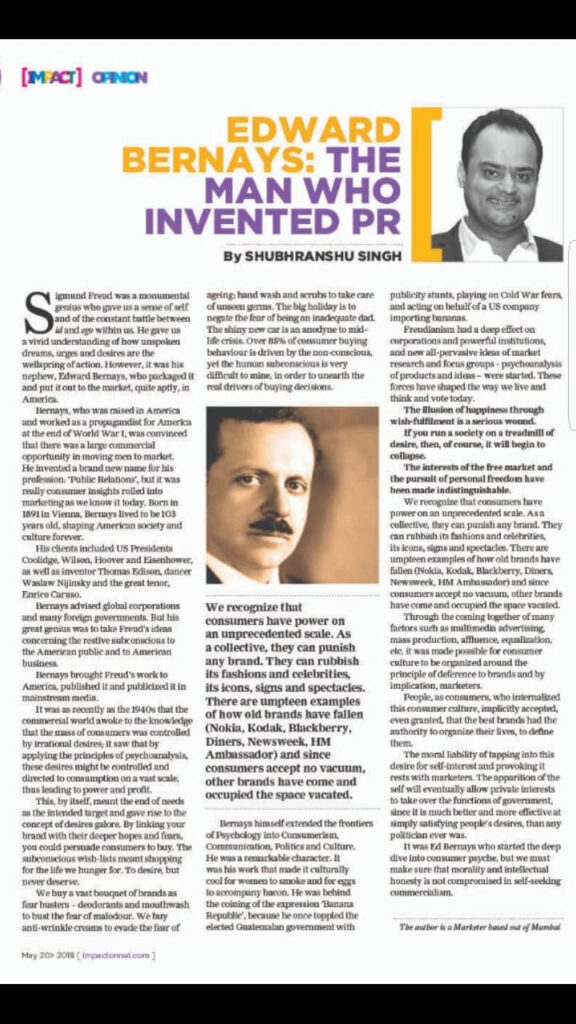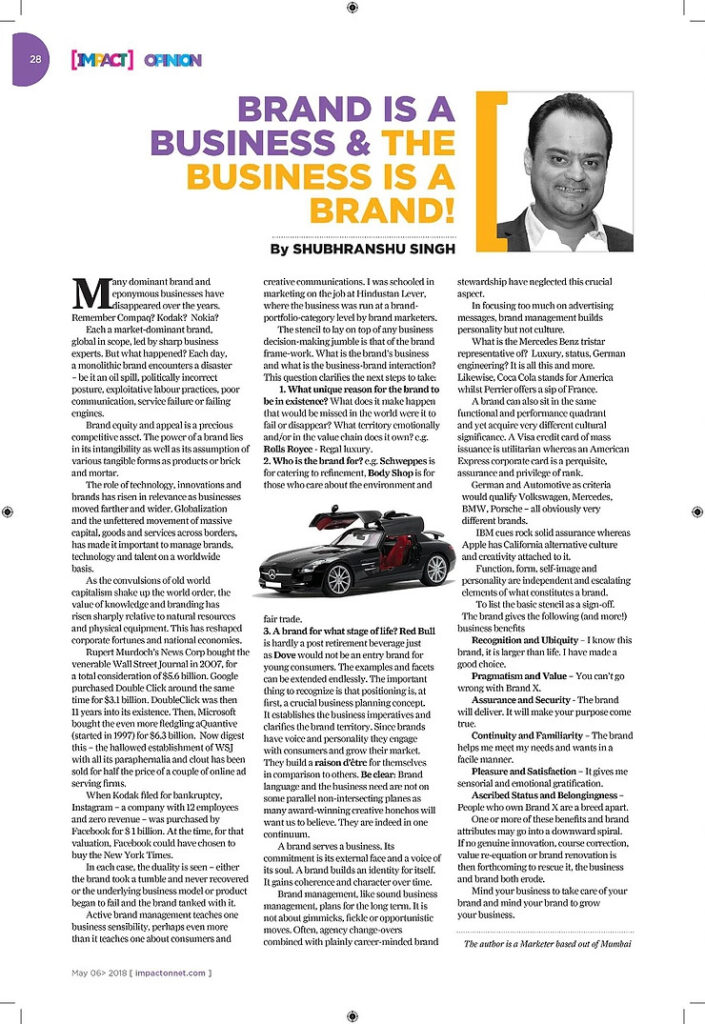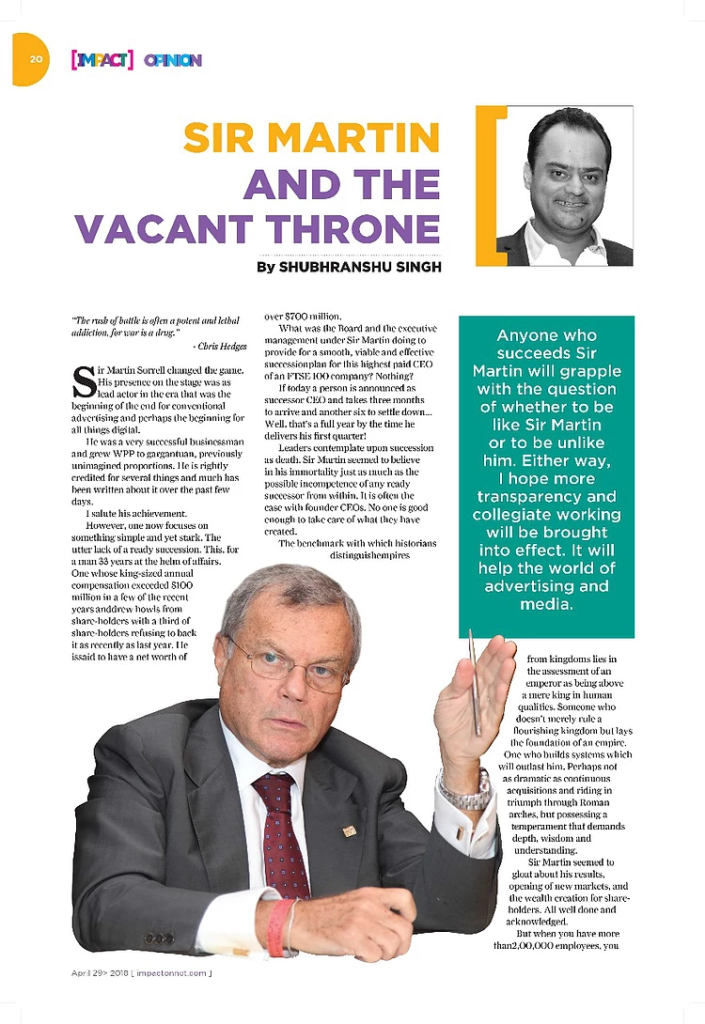Tinkerers, Talkers and Bureaucrats: Marketing management in decline
In the world of marketing bureaucracy, there is a large premium attached to ‘disruption’ and ‘innovation’. These magic words can win promotions. At both the plan and execution stages, innovation work self-selects the elites of marketing management. It makes reputations for marketers. In the public esteem, the canals carrying credit run deeper when a marketer has ‘innovation experience’ written in bold on the resume. But let us consider the brand for a moment, declutched from the stranglehold of these brand marketers. There is no life plan for a brand that insists on innovation. In fact, in a brand’s history, only a few major innovations make a difference of the kind that moves the business performance, share and equity to a higher orbit. Often, innovations are urgent but unimportant activities made to seem necessary because activity often substitutes achievement. Nothing delights a corporate bureaucrat like endless meetings. Meetings where everyone’s opinion leads to a fission reaction of more meetings. Nothing is decided but everything is discussed. The only thing that truly matters to a brand’s health is the source of value it brings to the consumers. Managing the core essence is important as this is what defines the brand and its business. The core essence of Nike is greatness through sports and endeavour. The shoes are secondary. The essence of Starbucks is a great experience while drinking coffee. Brands flourish because of loyal consumers, new willing acceptors and the adoption of it into their lifestyle habits. Brands get defined by rituals, stories and semiotics that signify their essence. To put it plainly to the brand manager – Don’t chase the new and loud, but do more of what made your product successful in the first place. 1. Don’t innovate beyond the cultural authority of your brand. But do as much as you can within the boundaries you have defined. Own the turf. Make sure innovations don’t distract but strengthen. 2. Creativity alone is no reason to do branding. Rather the brand should spur creativity. 3. Innovation is not about newness alone, it is also about business definition. You may find organic growth to be the mantra but new product myopia can make you lose the larger picture. 4. Quantity rarely, if ever, translates to quality. To grow brand equity and customer satisfaction by chasing more things is a surefire route to failure. 5. Focus on brand attitude, pricing, experience and authority. These things are far more important than the new kids you put on the block each planning year. There is also problem in the fact that even in a large market like India, there are very few sovereign brands. By this I mean brand management teams empowered to decide what to do. The vast majority are tinkerers, word smiths, translators and multinational bureaucrats. I call it ‘brand management by synonyms’. The typical MNC brand bureaucrat handles words and adjectives. For example, an MNC with a portfolio of hair shampoos has decided upon ‘glossy, shiny, bouncy’ as their three brands. The same shampoo brands then churn the same attributes and adjectives across the region as brand benefits. This is not brand management. This is at best in-house servicing. Therefore, decide if you are a business or a franchise? Are you a sovereign source of brand action or just a design factotum? The typical signs of tinkerers and frenzied action addicts: 1. They don’t track or look at comparisons from the recent past. They always make more forward looking statements. 2. They don’t focus on tracking return per unit of input. Therefore larger investments become justified as successes. 3. They don’t innovate to a business end. They do it to earn merit. Therefore, the innovations are all over, not necessarily catering to the most valuable consumers as they ought to. Poor segmentation is a clear sign of innovation-frenzy. 4. They are on an activity treadmill. Since their esteem is built on having done many things, they must feed the boiler to keep up the steam. 5. Objectivity escapes the sharpest brains. In fact, vanity afflicts the smarter more readily. When it reaches the top, doom is a matter of ‘when’ not ‘if’. 6. French author La Rochefoucauld observed that ‘self-love is cleverer that the cleverest man in the world’. Therefore smart performers will end up justifying all their actions. Do not reward innovation activity alone. Reward the results of the entire brand business and health of its attributes. French aviator, partisan and story teller Antoine de Saint –Exupery had said, “If you want to build a ship, don’t drum up the men to gather wood, divide the work, and give orders. Instead, teach them to yearn for the vast and endless sea.” I think it holds for marketers as well. If you want to build a brand, don’t tinker with materials, designs and innovations but yearn to master the brand essence.
Tinkerers, Talkers and Bureaucrats: Marketing management in decline Read More »







